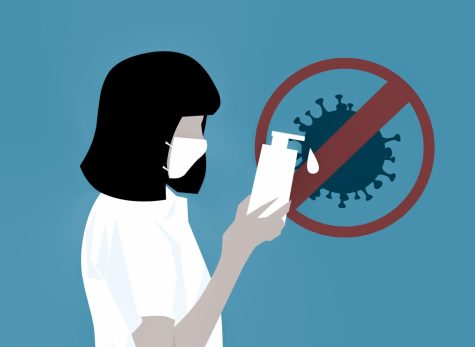BEYOND | The Journal and COVID-19: Moving Forward
COVID-19 is the ultimate force of change as of late, with almost every facet of society facing some change. Work, schools and even the Supreme Court have had to change how they operate. The Journal is no different. With an upcoming rebrand, years of impressive reporting and a new online format, The Journal is growing in a way that it has not seen before.
For years, The Journal had both an online presence and a print presence, with stories covering news ranging from the 2016 presidential debate to trans activism on campus. While the stories were good, as they provided insight into the UIS community and national issues, writers and staff were fundamentally restricted to the demands of a print-oriented newspaper. Journal staff writers were required to get their articles in by Thursday evening with little room for last-minute correction due to the publisher’s needs. Current assistant editor and then-staff writer Kaisha Johnson explained the experience, saying, “The operations were basic…They were like a traditional newspaper. Every week, we would write something, and it was basically to these parameters where we had to have it in by Thursday. Otherwise, we couldn’t print. Every Tuesday, we printed, and Wednesday, it would come out.” Newspapers were then distributed throughout campus in stacks for students and faculty.
While traditional and perhaps more historic in its approach, this method made it difficult for writers to keep up to date with an increasingly online world. As a result, students were not afforded the intellectual freedom and wide array of content they could make in an online format. The move, in a sense, is modernizing, says Johnson as it has “broadened” the newspaper’s publishing ability and the content it provides. Describing the shift to online content, Johnson explained, “I think the staff writers have it a lot easier. There’s wiggle room. There’s a lot of ideas that can be thrown.”
As COVID drove students online and off-campus, they had to grow and operate in a new work environment that they otherwise would never have experienced. Now, they could work as content came to them and not undermine the schedule of Journal staff, mostly via Zoom and spread across towns all around the country.
Though it was not without its difficulty, in an interview, Scott Faingold, Director of Student Media and Faculty Advisor to the Journal, explained that one of the biggest changes that came with COVID was the communication and change in environment. “We moved all of our activities online, and that was the first time I had ever used Zoom,” Faingold noted. “There was a bit of a learning curve…We were doing group phone calls for a while. And it was a little awkward, but the work never stopped.” Sunday meetings still continued, and articles still came. But as the articles began to go online, they became more planned for publication. Instead of shooting out all the articles at once, The Journal now publishes articles throughout the week to keep the content flowing. It also helped that Faingold brought the old student radio system, long abandoned by staff members, into The Journal‘s brand via the addition of streaming content. Proposals for podcasts, both guest- and staff-oriented, came up. In a sense, The Journal was not what it used to be; it was reborn.
And with that rebirth came the need for a name change. Though The Journal strongly represents the paper’s original mission, it has grown beyond its old roots. As of early October, The Journal has sought suggestions for a new name and logo, with information on the contest here. And though it is unclear what the paper will be from this point on, one thing is for certain: It is going to grow and live on.











